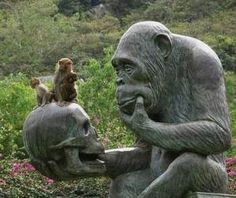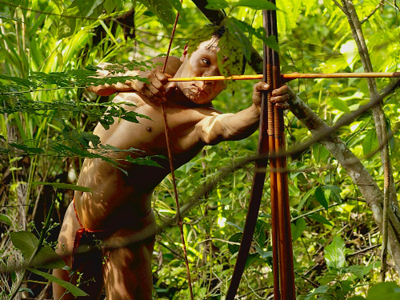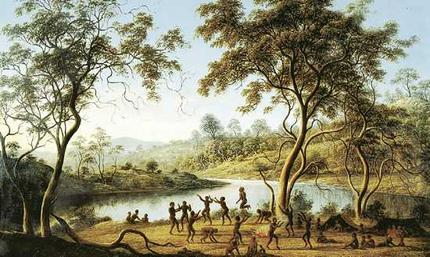ABOUT
ANCESTRAL MOVEMENT is an approach to embodied practice aimed at radically transforming and expanding the sense of self, exploring and rediscovering patterns of movement and awareness that are part of our species’ history, both recent and ancient. Through the practice we aim to recover the strength, agility, balance, grace, joy and ease of movement, profound relaxation and quiet mind that are our birthright as human beings. To rehabilitate old injuries and prevent new ones, to make ourselves and our families and friends happy and peaceful, to come back home to our senses, our bodies, our communities and our place in relationship with the rest of the living world.
Many natural movements were essential to our families living as foragers and hunters as recently as a few hundred or thousand years ago, and are essential to feeling comfortable and confident in different environments: things like walking, running, climbing, crawling, lifting and throwing, digging, jumping, balancing, moving silently, and being still – but all of these are built upon far more ancient inherited patterns which we share with other creatures: primates, reptiles, amphibians, fish, worms, even algae and bacteria.
With the “ancestral” approach to embodied practice, we can use movement and awareness exercises – drawn from any and all traditions and cultures, and spontaneously created according to our needs and purposes – to explore the felt sense of the body and three-dimensional space. Patiently, progressively opening up every part of the anatomy into conscious awareness, and then continually linking the improved sense of each part with the story of its evolution, and developing a greater appreciation for the existence of similar features and movements in other creatures – the more we feel our own spines, for example, the more we sense the existence and movements of other spines the world around us.
As we explore, we find that the body is full of layer upon layer of extraordinary, ancient, ancestral power – four billion years of adaptation and embodied knowledge – and we start to anchor this understanding of shared ancestry and vast evolutionary timescales in the actual feeling of the body itself. Our perception of time and space shift: we feel the fact that we are giant organisms of mind-boggling complexity, made of water, rock, and air; and more and more we sense and feel the immensity of past eons right now, in the present moment. Our deepening sense of ourselves, our minds and our bodies, grants us a deepening sense of the living world and our continuity with it, and eventually, at a certain point, we come back to a very simple and natural form of worship of life itself.
The purpose of this work on a physical level is simply to become a properly developed human being. To undo much of the conditioning we have received from our overly bio-phobic culture, and to pick up the process of physical and cognitive development where we left off sometime during childhood. We have been gifted – by the hard work of our ancestors – with the keen eyesight, grip and pulling strength, agility and spatial skills of a primate; the undulating spine, powerful neck, arms and explosive hind legs of a quadruped; the grasping fingers and toes, and the contralateral “opposite-arm-and-leg” locomotor pattern of a reptile; a fishy torso wrapped in thick sheets and cables of spiralling muscle. A segmented body structure built around a peristaltic central tube, and the fundamental existence as an oozing, quivering, rippling, pulsating, breathing bag of mostly-water. Each and every aspect of our inheritance is a great strength that can be developed if we choose.
Becoming familiar with patterns we share with other creatures also helps us discover and appreciate the many great abilities we have that are truly unique to human beings. Gesture, mimicry, dance, and theatre; ritual, music, song and language; storytelling, myth-making, play and endless creativity; a lifelong ability to learn, a brain that can change itself and a mind whose potential is still largely unknown, and which most of us barely begin to realise.
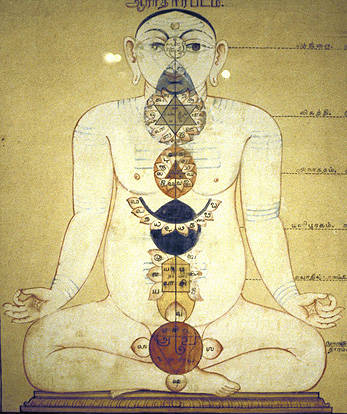
With a basic understanding of comparative anatomy and the neuroscience of body awareness and empathy between species, we can begin to link the modern body-based spiritual traditions like Yoga and Daoism with older traditions of ancestor worship and animal mimicry practiced by indigenous cultures throughout history all over the world. We can recognise that the sense of the body is the fundamental seat of the self through which we feel the rest of the world, and that this sense is “plastic”, and able to be developed throughout our lifetimes. We can then consciously develop this sense in ways that improve and enrich our lives and our appreciation of who and what we are, where we come from, and where we might go from here.
In the womb each and every one of us had gills, a tail, webbed fingers and toes. We are the descendants of microscopic worms! Of ancient fish, that learned to walk and breathe air. Beyond health or rehabilitation or anything else, the main purpose of ancestral movement is just to help us remember.
Some places to start:
- Natural movement – ancestral movement
- The Inner Reptile
- The Inner Fish
- Spiral Movement
- Wrestling
- Body maps – changing bodies in our heads
- Body maps and sensorimotor amnesia
- Body maps, spinal awareness and interoception
- Ancestral Movement Facebook page – feel free to “like”
- The Ancestral Movement Discussion “Group” on Facebook – great if you want to join in conversations
- Ancestral Movement Youtube Channel
ABOUT ME
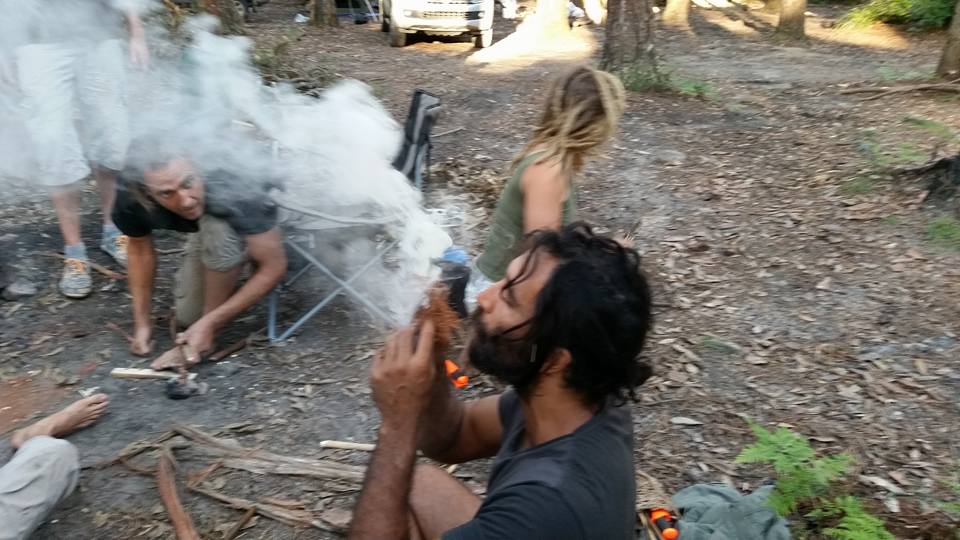 My name is Simon Thakur. At the time of writing (January, 2016) I am 36 years old, and just recently moved to the Jervis Bay region in southern New South Wales, Australia. If you like, you can find me on facebook here.
My name is Simon Thakur. At the time of writing (January, 2016) I am 36 years old, and just recently moved to the Jervis Bay region in southern New South Wales, Australia. If you like, you can find me on facebook here.
Ancestral Movement is my project, my “big idea” that has come from more than twenty years of practice and research across a wide range of fields. I have studied the natural sciences since I was in high school and through university – covering the basics of physics and mathematics and going deeper into chemistry, biology, physiology and anatomy (including a year of weekly cadaver studies), exercise science, nutrition, biochemistry, molecular cell biology and molecular genetics, immunology, and neuroscience, as well as psychology, anthropology, archaeology, sociology, history and religious studies. I am currently doing postgraduate studies in ecology and evolutionary biology.
I have studied and worked as a physical rehabilitation practitioner for over a decade, starting with Chinese medicine (focusing on Tuina), Shiatsu and traditional Thai massage, then moving into remedial massage, myotherapy (an attempt in Australia to re-create a “hands on” style of physical therapy for pain problems somewhat similar to physio) and rehabilitative exercise, acquiring multiple diplomas and an advanced diploma, and eventually getting a degree in Health and Rehabilitation Science.
During all of this time I have also been learning and practicing predominantly Eastern traditions of martial arts and mind-body transformation. I was obsessed with Yoga and martial arts as a child and read everything I could find in the public library (back in Dunedin, New Zealand, where I grew up). I did some Judo as a kid, some boxing and kickboxing as a teenager, then went on a year-long student exchange to Thailand when I was 17, knowing only that I wanted to practice Muay Thai and learn about Buddhism and meditation. I ended up living with my Muay Thai teacher, and ordained as a monk during my the end of my time there at the age of 18, staying for a wonderful month at Wat Tong Pai near Chumphon in south Thailand, and a beautiful couple of weeks at Suan Mokh forest retreat centre near Surat Thani. I was introduced to Buddhism through the works of Buddhadasa Bhikkhu, whose incredible 550 page translation and commentary on the Buddha’s Anapanasati Sutta (discourse on mindfulness based in the in- and out-breaths) is still my most treasured meditation manual, which I return to every year for further study.
Since then I have studied Japanese Jujitsu, Capoeira, Chinese internal martial arts and Qigong, Yoga and Yoga therapy, Feldenkrais, Butoh, Contact Improvisation, Pilates, Kit Laughlin’s Stretch Therapy and Monkey Gym, parkour, smatterings of Russian Systema and Mixed Martial Arts, and more recently Brazilian Jujitsu, freestyle wrestling, and Filipino Eskrima (also called Kali, or Arnis). I have lived for close to ten years in Asia – in Thailand, India, Japan, China and Taiwan – and six months in Brazil, studying and learning from the best people I could find, always trying to get as close as I could to the source of the arts and traditions that I found most interesting.
I have been a professional movement teacher since 2003, teaching Capoeira Angola, Yoga, Qigong, and for the last few years “natural movement”, which was the term I decided to use to describe the distillation of all of my studies into an open system of free exploratory movement training based on sound principles of anatomy and physiology, biomechanics, neuroscience and evolutionary biology, creating new movements and games or methods while maintaining respect for the original traditions from which many of these ideas are drawn. Since I started openly talking about ancestral movement and teaching natural movement, I have been meeting and learning from a growing network of people who practice “bushcraft”, “wilderness” or “survival” skills, or “rewilding”. There are many people out there who have the same sense that these ancient skills which have been almost completely lost from many of our cultures are actually of immense value, for helping us through the current historical period and the immediate future of climate change and potentially massive ecological collapse, and also for simply better understanding our past and our place in the living world.
I have not worked as a “therapist” now for several years. Nowadays I find movement practice to be far more satisfying and far more beneficial than manual therapy, so I teach movement and meditation classes and run workshops and retreats which are accessible to people of all fitness levels. Everyone, absolutely everyone who comes has some sort of physical or psycho-social ailment that they want to improve – injuries, sickness, weakness, stiffness, shyness, sadness, or whatever. The point is simply that whatever our current condition might be, we can all change – gradually, over time – through applying the right kinds of stimulus to our bodies and to our minds. We work to change the physical structures of our bodies, and we work to change our brains, our perception, and our whole minds, using the same combination of movement, awareness, attention, breath, posture, relaxation, diet, education, and time in nature.
I have finally come to understand that community, and especially (for me and for people like me) community based around connection to nature, is the most important factor in human health and happiness, so now my work is more focused on building stronger communities of ancestral skills, fun healthy movement, joyful embodiment and deeper connection to nature.
MY TEACHERS
YOGA
- A.G., Indra & Ganesh Mohan (Svastha Yoga) – Chennai, India
- Ashokananda/Harald Brust (Yoga of Mindfulness) – Chiang Mai, Thailand
- Satyananda/Bihar School of Yoga – Munger, India
CAPOEIRA ANGOLA
- Ras Ciro Lima (Academia de Joao Pequeno de Pastinha) – Salvador, Brazil
- Gigante Angola (Tribo da Lua/Angoleiros do Mar) – Itaparica, Bahia, Brazil
- Angoleiros da Serra – Vale do Capao, Bahia, Brazil
CHINESE MARTIAL ARTS
- Luo De Xiu (Gao style Baguazhang and Hebei Xingyiquan) – Taipei, Taiwan
- Chang Fei Wang (Wu Dao Gong, Taiji, Xingyi, Bagua foundation) – Canberra, Australia
- Cai Song Fang (Wuji Gong standing meditation) – Shanghai, China
- Jing Shen Jin (Xinyiliuhe Quan) – Shanghai, China
- Zhang Xiao Yuan (Yi Quan) – Shanghai, China
- Dean Harrington (Guang Ping Taijiquan) – Tokyo, Japan
- Brett Wagland & Fontaine Ip (Yang style Taijiquan) – Canberra, Australia
- Serge Augier (Da Xuan basics & neigong) – workshops & online training
BUTOH
- Rhizome Lee (Subbody Butoh) – Dharamshala, India
CONTINUUM MOVEMENT
- Amber Elizabeth Gray – Australian workshops
JAPANESE MARTIAL ARTS
- Omiya Shiro (Daito Ryu Aikijujutsu) – Tokyo, Japan
- John Bear (IJJI/Kokusai Jujutsu Ryu) – Canberra, Australia
BOXING & MUAY THAI
- Chumsin Sangkamanthon – Chumphon, Thailand
BRAZILIAN JUJITSU
- Ben Langford (Elements BJJ) – Canberra, Australia
WRESTLING
- Nick Delatovic & Ben Keaney (Elements Wrestling, Stockade) – Canberra, Australia
ESKRIMA
- Rey Gelang (Bakbakan Kali Illustrisimo) – Canberra, Australia
PILATES
- Various teachers with Polestar Pilates Australia
ANCESTRAL SKILLS, NATURE CONNECTION, “REWILDING”
- Jake Cassar Bushcraft – Gosford NSW
- Lee Trew and Gina Chick (Bluegum Bushcraft/Wild Heart) – Jervis Bay NSW
- Kate Rydge and Sam Robertson (Nature Philosophy) – Coffs Harbour NSW
- Kev Newton (Australian Survival Instructors) – Central Coast NSW
- Daniel & Danielle Sainty (Rewild Australia) – Yarrowitch NSW
ACADEMIC QUALIFICATIONS
- Bachelor of Health & Rehabilitation Science, Charles Sturt University, Wagga Wagga
- Advanced Diploma of Health Science – Myotherapy, RMIT, Melbourne
- Diploma of Health Science – Remedial Massage, Canberra Institute of Technology
- Diploma of Health Science – Eastern Massage Therapy, Canberra Institute of Technology


